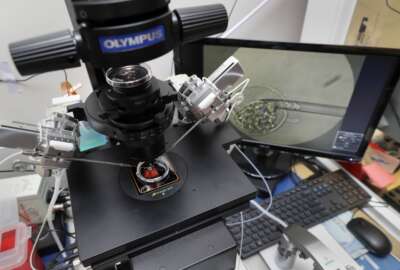Technology's Impact on Attack Vectors
When we think about situational awareness, we view the enterprise as a new battlefield and cybersecurity is going to change what a battlefield will look like over the next 8-to-10 years. Information needs to come in in all aspects of that battlefield to create a large view of the situational awareness so organizations can take action to defend themselves. It’s really about making sure we can pull information across the entire cyberspace, correlate it and then create situational awareness to understand where our defensive postures are secure and where we have vulnerabilities. That is the critical piece going forward.
John DeSimone
Vice President, Cybersecurity, Training & Services, Raytheon Intelligence & Space
That growth in both the amount of data, the number of devices and vulnerabilities that go with it makes it much more difficult for cybersecurity people to actually defend their networks. What we are seeing is a combination of both. It is old tactics, techniques and procedures with new devices and new protocols. Now think about the cloud infrastructure, new ways to transmit and new ways to hide. All of that is now happening. What it says to me is we now have to step back and think about how we collaborate between the public and private sectors and how we bring all our capabilities to bear on the problems.
General (Ret) Keith Alexander
Founder and Co-CEO, IronNet Cybersecurity
In 2019, agencies spent almost $17 billion on cybersecurity tools and people. They faced more than 28,000 cybersecurity attacks, and more agencies improved how they manage risk.
But that’s not enough. Traditional approaches need to evolve and agencies, and really all organizations, need to improve their resiliency to not only survive a cyber attack, but come out the other side better for it.
With the broadening attack surface and the move to 5G and other emerging technologies, agencies need to prepare for a host of new attack vectors ranging from next generation extortion through malware to the continued integration of operational technology with information technology to the hidden risks of the supply chain.
Retired Gen. Keith Alexander, the founder and co-CEO of IronNet Cybersecurity, said the number of devices on the network are ever-increasing and the infrastructure continues to expand, especially with 5G coming, and that is both good and troubling.
Alexander said the amount of data, the transmission speeds of that data and the inability of people to keep up with all that is requiring agencies and organizations to change the way they approach cybersecurity.
“Not only are we going to have to add in things like artificial intelligence and machine learning, but we’ve got to think about how we empower people, how we automate the detection of vulnerabilities and the detection of threats in our network. I think that is our future,” Alexander said on the Cyber Resiliency and the Nation’s Critical Infrastructure discussion sponsored by Raytheon. “We will have to confront this before we implement 5G because the number of devices per kilometer is potentially going from 100 to 1 million.”
Alexander said agencies are taking advantage of these automation tools, but the number of vulnerabilities are growing at a faster rate.
John DeSimone, the vice president for cybersecurity, training and services at Raytheon Intelligence and Space, said like many things in technology, cybersecurity is a big data problem.
“When we think about situational awareness, we view the enterprise as a new battlefield and cybersecurity is going to change what a battlefield will look like over the next 8-to-10 years,” DeSimone said. “Information needs to come in in all aspects of that battlefield to create a large view of the situational awareness so organizations can take action to defend themselves. It’s really about making sure we can pull information across the entire cyberspace, correlate it and then create situational awareness to understand where our defensive postures are secure and where we have vulnerabilities. That is the critical piece going forward.”
Alexander added that the situational awareness becomes more important as the power of malware and nation states and other adversaries turn up their attacks.
“That growth in both the amount of data, the number of devices and vulnerabilities that go with it makes it much more difficult for cybersecurity people to actually defend their networks,” Alexander said. “What we are seeing is a combination of both. It is old tactics, techniques and procedures with new devices and new protocols. Now think about the cloud infrastructure, new ways to transmit and new ways to hide. All of that is now happening. What it says to me is we now have to step back and think about how we collaborate between the public and private sectors and how we bring all our capabilities to bear on the problems.”
Listen to the full show:
Copyright
© 2024 Federal News Network. All rights reserved. This website is not intended for users located within the European Economic Area.









